Anatomy of an Ash ColumnIn November 2007 a 100m wide vent was highly active on the south side of a 350m high cone located on Anak Krakatau. Here we show details of the phreatomagmatic activity as seen from a boat stationed about 500 metres from the vent. |
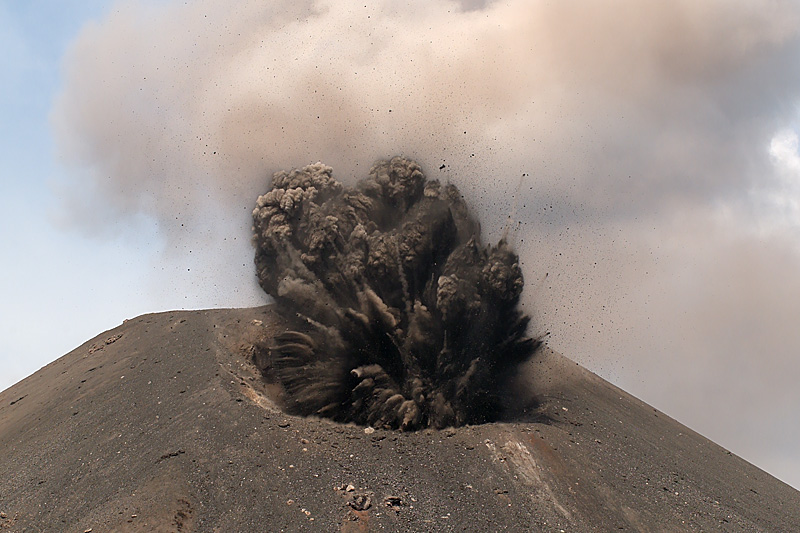 Phreatomagmatic eruptions eject a "cocktail" of bombs, lapilli and ash. | 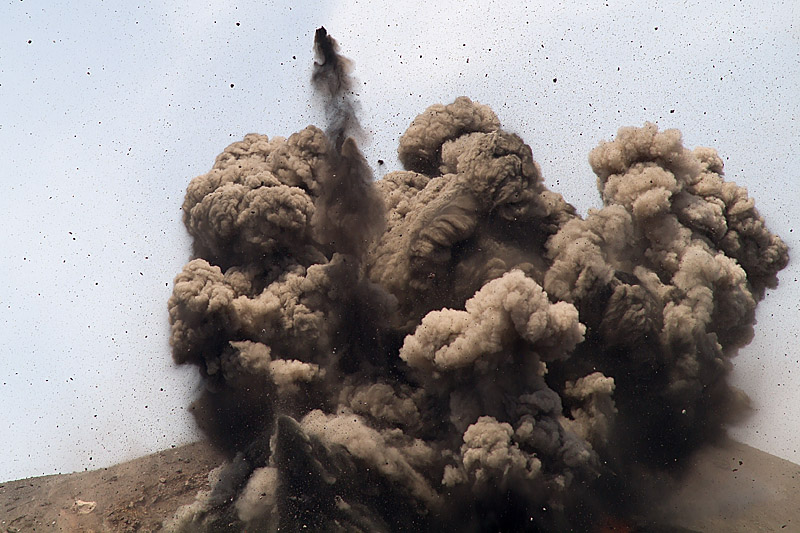 Large bombs sometimes flew in our direction, but never actually reached the sea. | 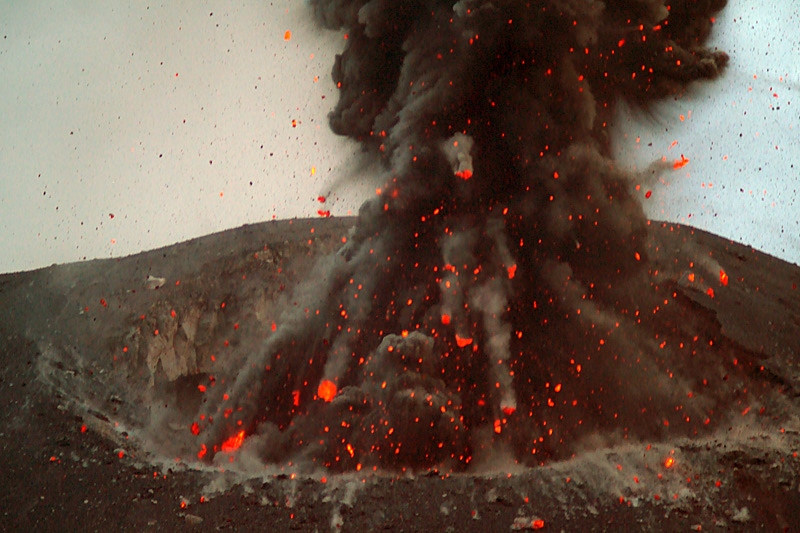 Some incandescent bombs appear like fiber optics tubes. | 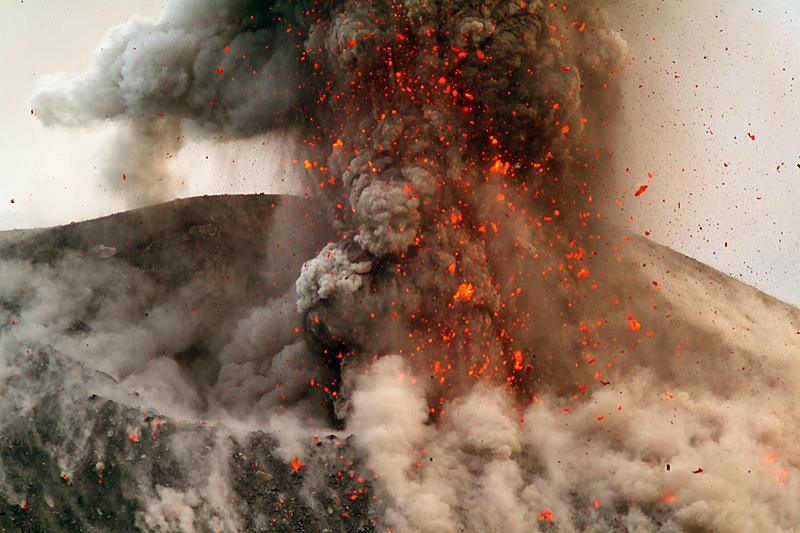 Dust caused by impacting bombs obscure parts of the cone. |
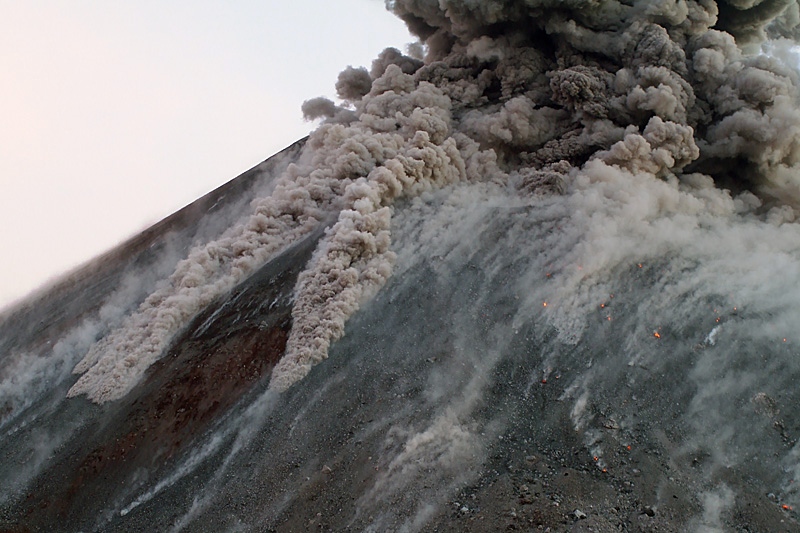 Sometimes hot ash is erupted in such quantities that minor pyroclastic flows are generated. | 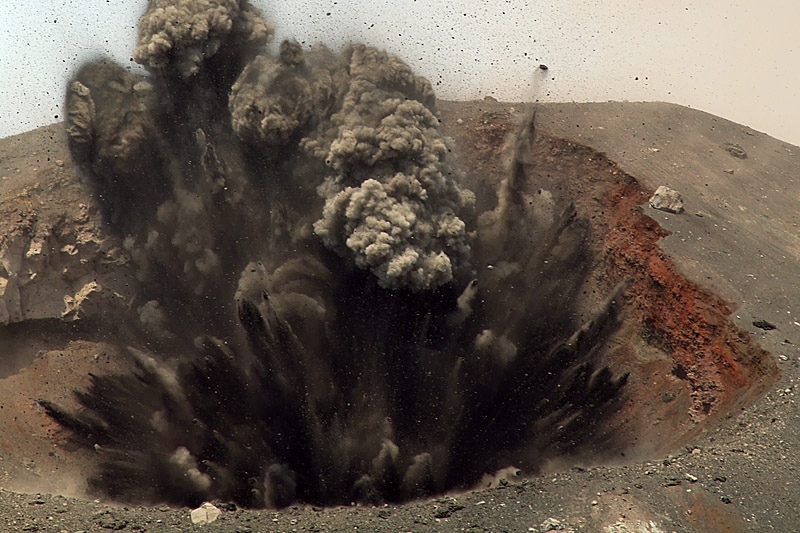 Often the bomb's ash trails create intriguing patterns reminiscent of flowers on a velvet fabric. | 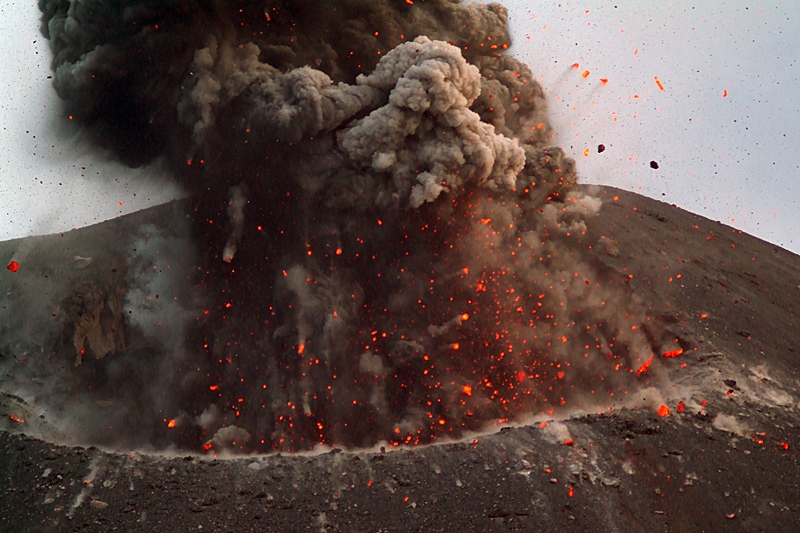 After the initial blast, the ash column rises while bombs fall all around the vent. | 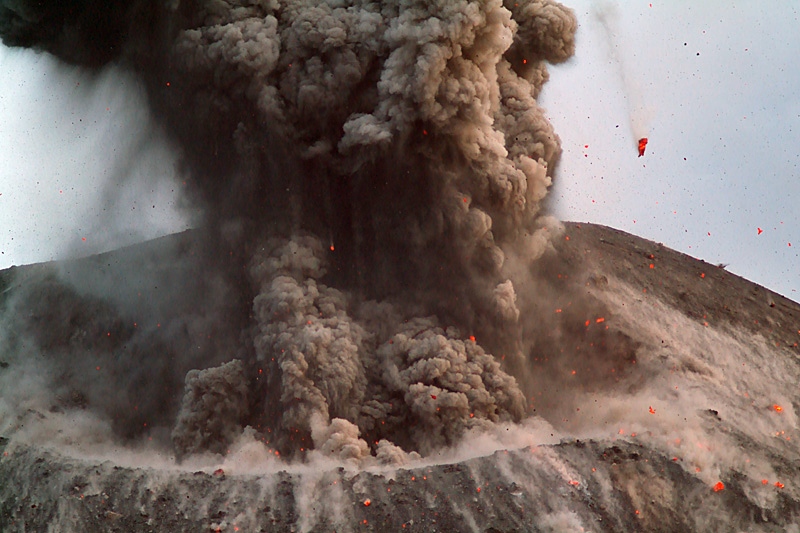 As the ash column rises creating vortices, a car-sized incandescent bomb falls on the right. |
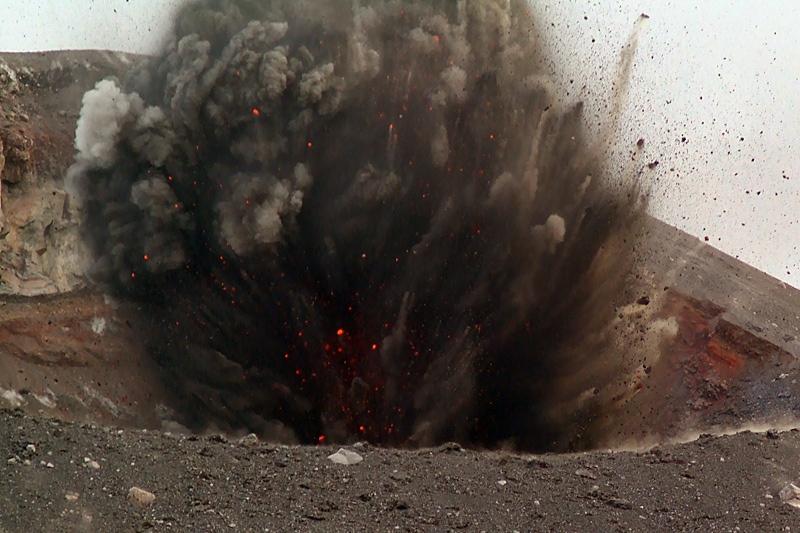 In the morning twilight, only few bombs appear incandescent, while others seem black. | 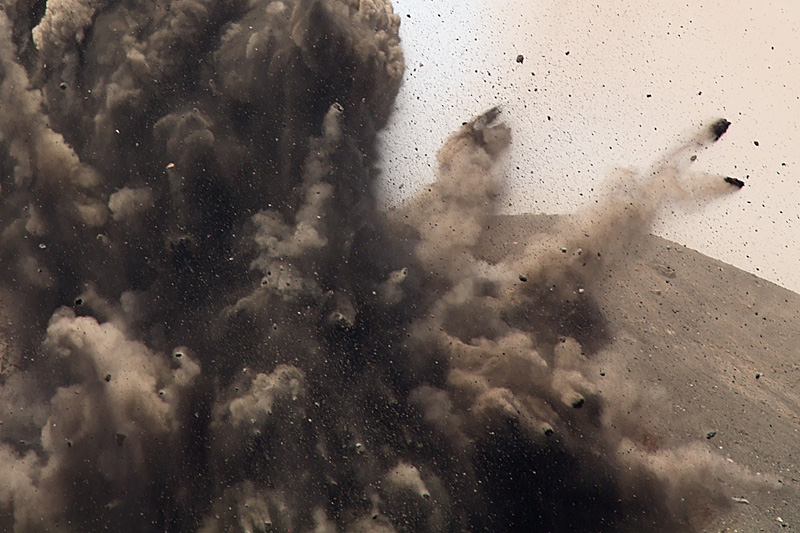 Ejection of huge blocks forming remarkable trails inside the cloud of ash and lapilli. | 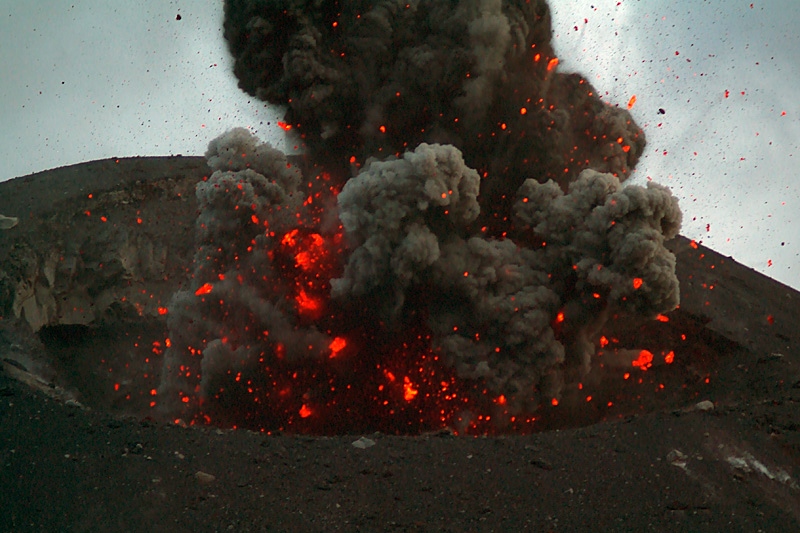 On 23rd November larger amounts of fresh magma rise within the conduit, and lava is ejected violently. | 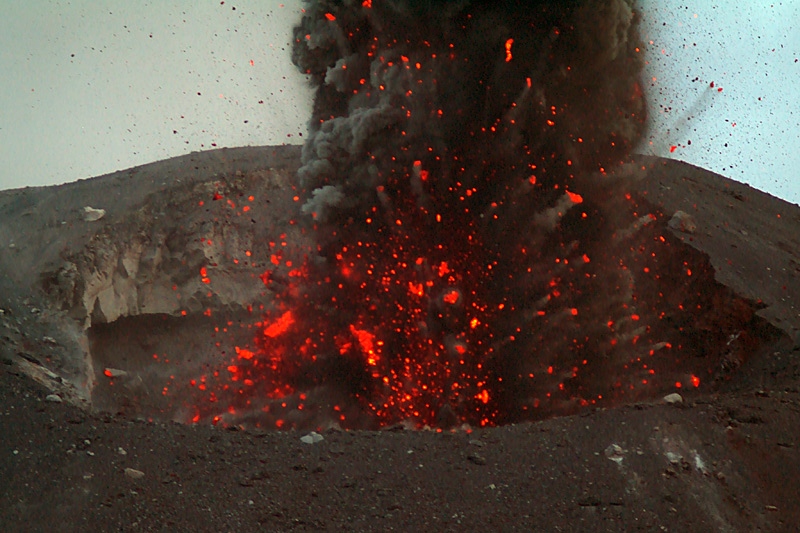 Another explosive blast: Some of the lava's incandescence is absorbed by the dense ash column. |
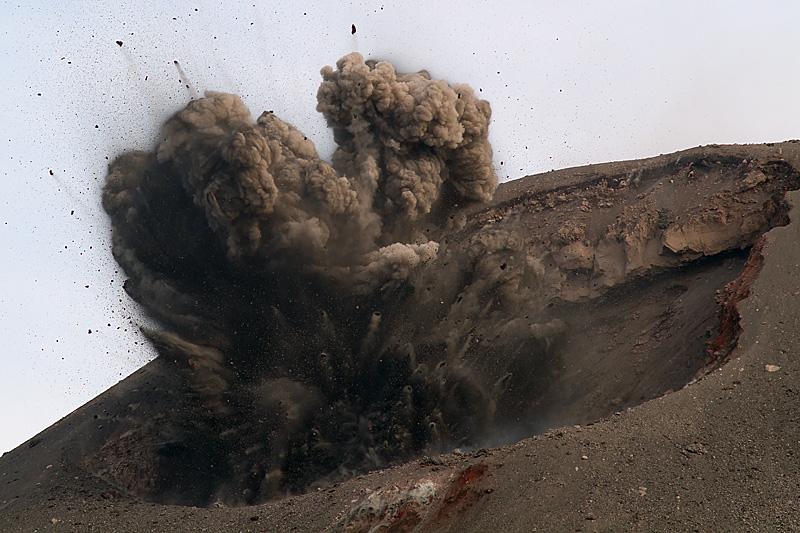 This is the first photo in series of three showing the development of a typical eruption. | 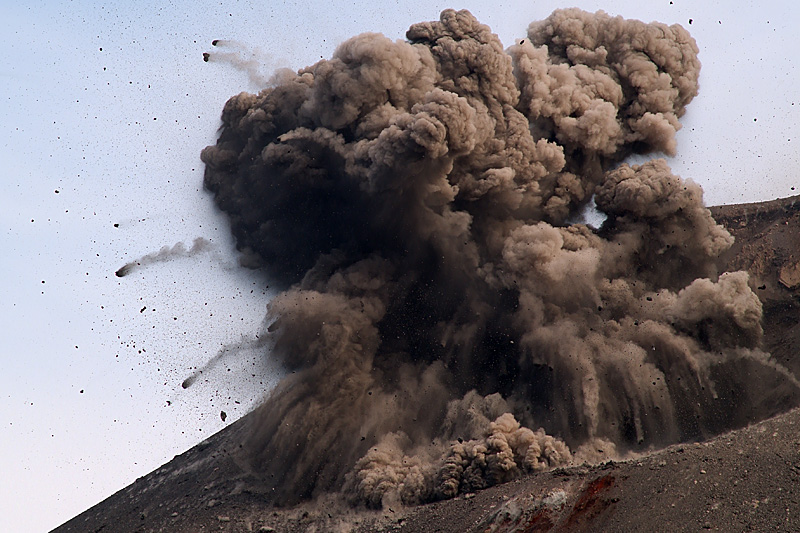 After two seconds, the biggest bombs start falling, creating turbulent ash trails. | 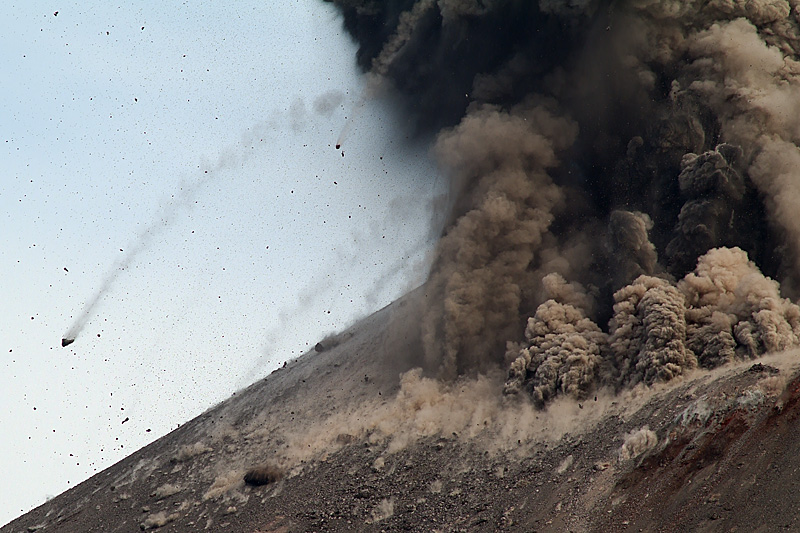 The biggest bombs have already impacted and roll down the flanks, while smaller ones continue to fall. | 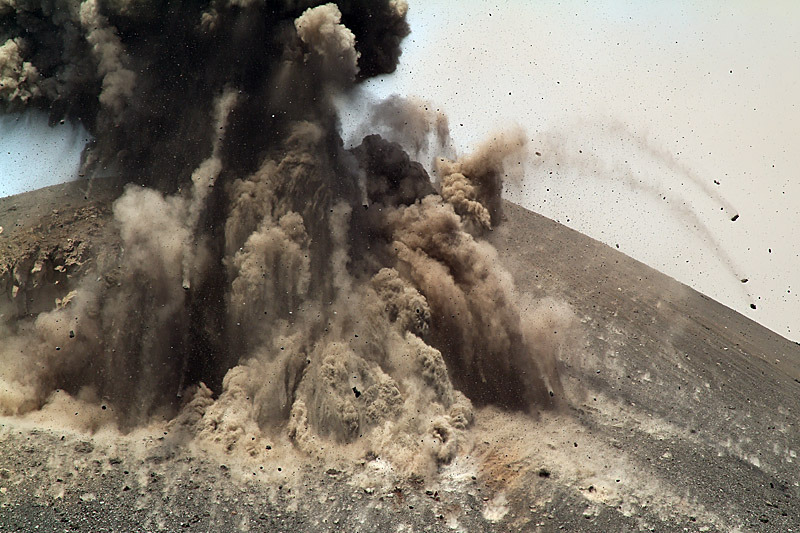 Often the bomb's ash trails are so thick as to create "ash roots" which seem to sustain the rising ash column. |
| Photos by Marco Fulle, taken during four boat trips from 21 to 24 Nov 2007, sometimes in the early dawn when the bomb's incandescence was visible. All photos were taken with a 135mm lens and a digicam (equivalent focal length of 200mm on 24x36 film). |